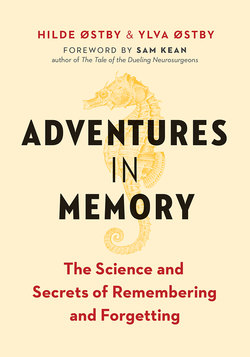Читать книгу Adventures in Memory - Hilde østby - Страница 4
На сайте Литреса книга снята с продажи.
ОглавлениеFOREWORD
Sam Kean
IN ONE OF Plutarch’s Lives, he mentions an old philosophical conundrum now called the Ship of Theseus Paradox. After slaying the minotaur in the labyrinth, the Greek hero Theseus sails home, and the people of Athens are so overjoyed that they preserve his ship as a memorial. Being a material object, however, the ship shows some wear and tear as the years pass, and every so often the caretakers have to replace a piece of it—a board here, a plank there. Eventually, after several centuries, they’ve replaced every last original piece of wood. So is it still the same ship now that it was at the beginning?
You can ask a similar question about our own bodies. We’re three-fourths water, molecules of which cycle into and out of us in a constant flow, never sticking around long. And because our DNA and other biomolecules break down, we swap in new parts all the time to repair them. Skin cells get recycled every few weeks, blood cells every few months, liver cells every two years. Even bone experiences constant turnover. Over the course of a decade or so, every last atom in your body gets replaced. So are you still you at the end?
Most of us feel, intuitively, that we do remain the same person from decade to decade. But how can that be if our bodies aren’t the same? Why do we feel this continuity so strongly? One big reason is because of our memories. The bio-bits come and go, but the pattern of information coursing through our brains remains largely consistent. In a fundamental way, then, we are our memories.
Yet, few of us really understand how memory works. We rely on misleading analogies or folk theories, or we simply remain oblivious and take it all for granted: memories bubble up so easily inside us, so effortlessly, that we rarely pause to consider just what a miracle they are.
Well, no more. After reading Adventures in Memory, you’ll fully appreciate what a complex, beautiful, and intricate thing memory is. Indeed, in the hands of Hilde and Ylva Østby, memory is more than a simple repository of our selves. It’s a creative force—something dynamic that actively shapes our thinking. It has all the rich, layered complexity of human beings themselves.
What makes the book unique is the double-barreled perspective the Østby sisters bring. Unlike, say, electrons or black holes, memory is both an objective and a subjective phenomenon. We need to understand the neurotransmitters and electrical firing patterns involved, but memory is a lived thing too. We need both sides—in other words, the literary and the scientific—to make sense of memory. It’s therefore reassuring to know that Hilde Østby is a novelist and her sister Ylva a neuroscientist. Imagine if another sibling pair—William James the famous psychologist and Henry James the brilliant novelist—had combined forces, and you can see what a valuable perspective this combination provides.
We usually think about science as ultra-rational, but it’s an intensely human activity as well. And it’s especially important to see that human side when studying memory, since it does influence our sense of self so profoundly. In exploring how memory works, then, Adventures in Memory is really a dive into your innermost self—the most intimate aspects of your being. And when you surface from this dive, you’ll never see the world, or your own self, in quite the same way again.
SAM KEAN, author of Caesar’s Last Breath and The Tale of the Dueling Neurosurgeons
